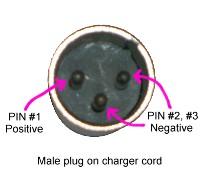
Shielding in this context simply means the ability of a cable to combat the effects of electromagnetic interference. How good an XLR cable is able to reject EMF interference depends on the nature of its shielding. Thus, the ability of XLR cables to reject EMF interferences is one of the few things that distinguish one XLR cable from the other. Some XLR cables have superior rejection over others. However, how well XLR cables reject these electromagnetic interferences varies from one cable to the other. Cable Shielding: EMF Interference RejectionĪll XLR cables are able to reject electromagnetic interference to a large extent. This build quality directly translates into their flexibility and durability. Therefore, the main distinguishing factor among XLR cables is their build quality. Thus, when these inferior XLR cables are subjected to any impact, they give way. Their insulation and outer jackets do not over great impact absorption whenever they are subjected to stress. The outer jackets of these inferior XLR cables tend to be hard, which causes them to break easily.

On the other hand, inferior XLR cables have relatively thinner outer jackets than high-quality ones. This improved impact absorption becomes useful whenever the cable gets stepped on or hits the stage since it ensures that the cable does not get compressed or damaged. Cables with a high number of strand counts are very flexible.Īlso, the insulation and outer jacket of high-quality cables are made from special materials that provide it with great impact absorption. The flexibility of an XLR cable depends on its strand count. High-quality XLR cables can be bent without breaking. Flexible cables are able to withstand heavy abuse. The type of material used in making high-quality XLR cables makes them flexible as well. Due to their thickness, high-quality XLR cables last longer than inferior ones. High-quality XLR cables have thick outer jackets that protect them from damage. This is because XLR cables made from high-quality materials are always thicker than those made from inferior materials. The build quality of an XLR cable directly affects its flexibility and durability. The build quality of XLR cables is the major difference that exists between XLR cables.

Differences That Exist Between XLR Cables Build Quality of Cable: Durability and Flexibility It is also used in some mixing desks and for connecting some condenser microphones and UHF wireless microphone beltpacks as well. The XLR connectors that come attached to mini XLR cables are relatively smaller than the regular XLR.ĭue to this, this mini XLR microphone cable is usually used on smaller equipment like some field and studio recording headphones. The main difference between this mini XLR and the regular XLR is the size of their XLR connectors. Just as the name suggests, the mini XLR is basically a smaller version of the commonly used XLR microphone cable.


 0 kommentar(er)
0 kommentar(er)
